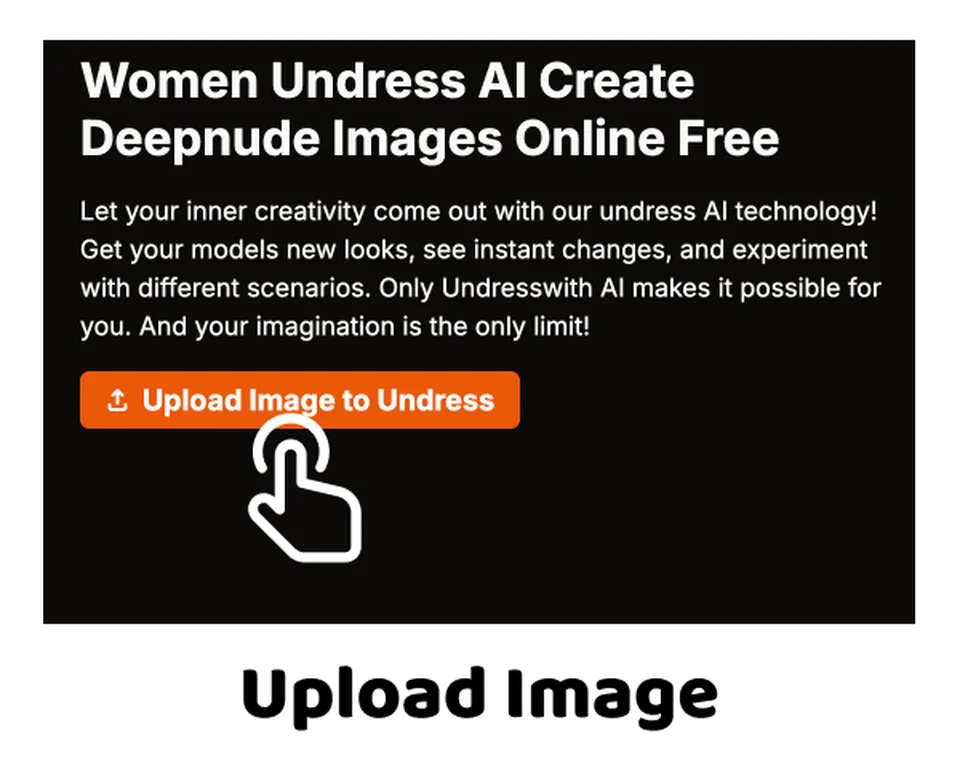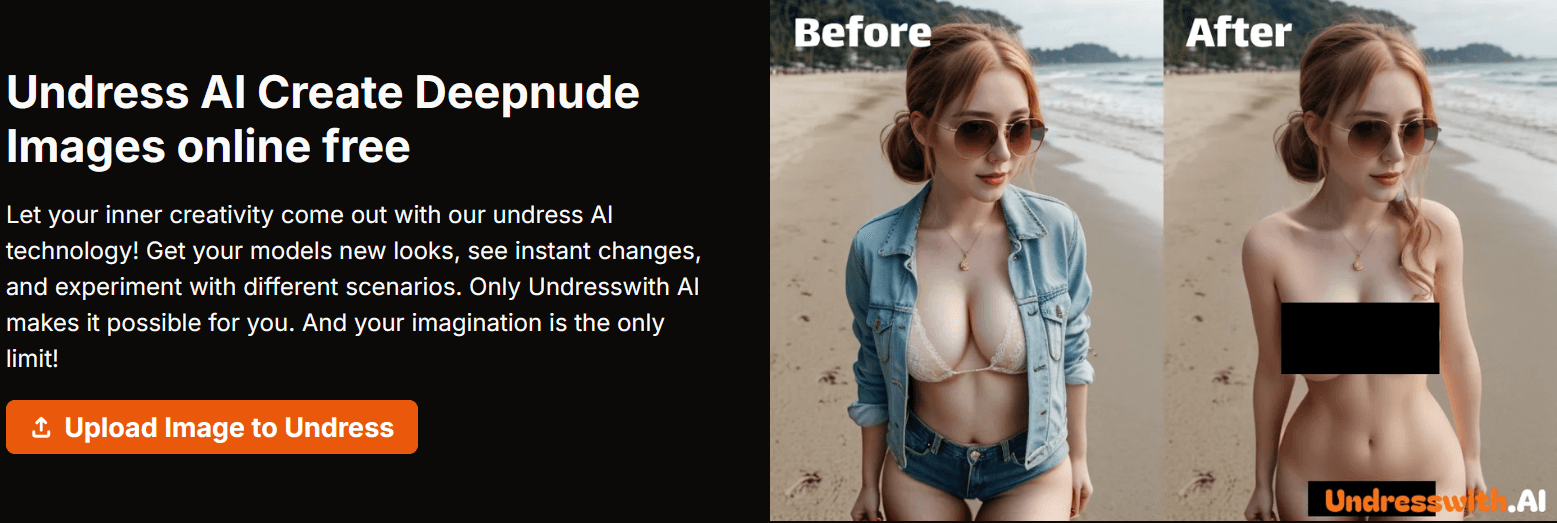Undress AI tools, powered by sophisticated algorithms, have emerged as a controversial yet technically fascinating application of artificial intelligence. These tools, often marketed for entertainment or artistic exploration, claim to be able to remove clothing from digital images. This article aims to provide a purely technical, educational overview of how these tools generally function and are used, emphasizing responsible usage and highlighting the potential pitfalls. It does not endorse or encourage the use of these tools for any purpose that could be harmful, unethical, or illegal.
Disclaimer: This article is for informational and Academic purposes only. The author does not endorse the use of undress AI tools for any unethical or illegal activities. Using such tools to create or distribute inappropriate content can have serious legal consequences.
Understanding the Technology (and its Limitations)
Undress AI tools typically rely on deep learning models, specifically Generative Adversarial Networks (GANs) or similar architectures. These models are trained on vast datasets of images, learning to identify patterns and relationships between clothed and unclothed individuals. The AI attempts to “imagine” what lies beneath the clothing based on its training data.
It’s important to stress that these tools are not perfect. The AI’s interpretation of the underlying image is often based on assumptions and statistical probabilities, leading to inaccuracies and sometimes bizarre or unrealistic results. Factors such as image quality, pose, clothing type, and the specific AI model used can all significantly impact the outcome. The technology is constantly evolving, but it’s crucial to understand its inherent limitations.

A Step-by-Step Guide to Using an Undress AI Tool (for educational purposes)
While the specific interface and features may vary depending on the chosen undress AI tool, the general process usually involves the following steps:
- Choosing the Right Tool: Several undress AI tools are available online, often as web-based applications or downloadable software. Research thoroughly and choose a reputable tool that aligns with your needs (keeping in mind the ethical considerations). Be wary of tools that make unrealistic promises or lack transparency about their functionality. Free tools may have limitations in terms of image resolution or processing speed, while paid tools may offer more advanced features.
- Preparing the Image: The quality of the input image is paramount. Choose a clear, high-resolution image with good lighting. Images with complex backgrounds or unusual poses may be more challenging for the AI to process accurately. The subject should ideally be facing the camera, and the clothing should not be too loose or too tight.
- Uploading the Image: Once you’ve selected your image, upload it to the chosen platform. Most tools have a simple drag-and-drop interface or a file selection option.
- Selecting the “Undress” Function: The tool should have a clearly labeled function or button to initiate the clothing removal process. This might be called “Undress,” “Remove Clothing,” or something similar.
- Processing the Image: The AI will now analyze the image and attempt to reconstruct the underlying image. This process can take anywhere from a few seconds to several minutes, depending on the image size and complexity, as well as the processing power of the tool.
- Reviewing the Results: Once the processing is complete, the tool will display the generated image. Carefully examine the results. As mentioned earlier, the quality can vary significantly. You may notice inconsistencies, distortions, or unrealistic features.
- Adjusting Parameters (if available): Some tools may offer options to adjust certain parameters, such as the level of detail or the specific areas to focus on. Experiment with these settings to see if they improve the results.
- Downloading or Saving the Image: If you are satisfied with the results (again, keeping in mind the ethical implications), you can typically download or save the generated image. Tips for Best Results (and Managing Expectations)
- High-Quality Images: Use clear, well-lit, high-resolution images.
- Simple Poses: Images with straightforward poses tend to yield better results.
- Avoid Complex Clothing: Loose or overly complex clothing can be challenging for the AI.
- Manage Expectations: The technology is not perfect, and the results may not always be realistic.
- Ethical Considerations: Always prioritize ethical considerations and respect the privacy of others.
Common Mistakes to Avoid
- Using Low-Quality Images: This will almost certainly result in poor results.
- Ignoring Ethical Implications: Using these tools without consent or for malicious purposes is unacceptable.
- Expecting Perfect Results: The technology is still under development, and imperfections are common.
- Sharing Inappropriate Content: Sharing or distributing images created with these tools without consent can have serious consequences.
- Believing the Results are Real: It’s crucial to remember that these are AI-generated images, not real photographs.
The Ethical Tightrope
The development of undress AI remover tools raises serious ethical concerns. The potential for misuse, including creating non-consensual intimate imagery, is a significant issue. It’s crucial to have open discussions about the responsible use of this technology and to implement safeguards to prevent its misuse. Laws and regulations may also need to evolve to address the unique challenges posed by these tools.
The Future of the Technology
While the current iterations of undress AI tools have limitations, the technology is likely to improve over time. As AI models become more sophisticated and training datasets grow larger, the quality and realism of the generated images may increase. However, the ethical considerations will remain paramount, and it’s essential to prioritize responsible development and usage.
Conclusion
Undress AI tools represent a fascinating, albeit controversial, application of artificial intelligence. Understanding the technology, its limitations, and its ethical implications is crucial. This article has provided a purely technical overview of how these tools generally function and are used, emphasizing responsible usage and highlighting the potential pitfalls.
It is vital to remember that this technology should never be used to create or distribute inappropriate content or to violate the privacy and dignity of others. The ethical considerations surrounding these tools must be at the forefront of any discussion about their development and use
FAQs
- How do Undress AI tools work?
Undress AI tools use complex algorithms, often based on deep learning models like Generative Adversarial Networks (GANs), to analyze images. The AI then attempts to “imagine” what lies beneath the clothing based on its training, essentially trying to reconstruct the image as if the clothing were not present.
- Are Undress AI tools accurate?
No, Undress AI tools are not perfect. The technology is still in its early stages, and the results can vary significantly in quality and realism. The AI’s interpretation of the underlying image is based on probabilities and assumptions, which can lead to inaccuracies, distortions, and unrealistic features. Factors like image quality, pose, clothing type, and the specific AI model used all influence the outcome.
- What are the ethical concerns surrounding Undress AI tools?
The development of Undress AI tools raises serious ethical concerns, primarily due to the potential for misuse. These tools can be used to create non-consensual intimate imagery, leading to cyberbullying, harassment, and even sextortion. The potential for harm is significant, and it’s crucial to have open discussions about responsible use and implement safeguards to prevent misuse.
- What are some common mistakes to avoid when using Undress AI tools?
Some common mistakes include using low-quality images, ignoring the ethical implications, expecting perfect results, sharing inappropriate content, and believing the results are real. It’s crucial to remember that these are AI-generated images, not real photographs, and should be treated with caution and respect for privacy.
- What is the future of Undress AI technology?
While current Undress AI tools have limitations, the technology is likely to improve over time. As AI models become more sophisticated and training datasets grow, the quality and realism of generated images may increase. However, the ethical considerations will remain paramount, and it’s essential to prioritize responsible development and usage to prevent misuse and protect individuals’ privacy.
